When you feel a close-knit and trusted relationship with your companion, it’s high time for a new step. Once the horse is ready, you can introduce a new riding tack.
The process of the horse getting used to new equipment could be time-consuming but it’s an integral part of the horseback riding activity. It could take a few months when your partner is ready for working with the rider on his back. So you have to be careful and smooth while showing a brand-new tack. It’s recommended to divide the introduction into several short sessions and the parts should be presented one by one. While doing this, don’t forget about your own safety such as gloves and a helmet.
This article describes basic gear used for tacking up horses which is essential for every horseman. A detailed review is provided as well as substantial guidelines so you could choose which type of equipment fits you best.
Horse Saddles

It’s claimed as one of the most important pieces of tacking gear that provides comfort and safety for both the rider and his horse. If the saddle is tacked up properly, that highly enhances the horseman’s protection to sit tight and reduce the chance of falling off the horse while riding. It also improves your posture so you could find the best sitting position to feel comfy so your moves are free.
Furthermore, a saddle is a great safety gear for your horse too. It helps distributes the rider’s weight duly during the ride to prevent further health conditions. This improves the horse’s durability and longevity as well.
Basic Structure
All horse saddles have a common basic structure that consists of several parts such as:
- a tree which is a base of the saddle, the rest of the parts are built on the tree. In fact, there are treeless saddles as well (Western and English styles available) that obviously don’t have a tree. They’re believed to be more flexible and reduce health issues for the horse. Actually, it’s up to the rider’s taste and comfort.
- a pommel (swell) – a front part of the saddle that provides the rider’s grip.
- a seat in the middle of the gear where the rider sits.
- a cantle at the back of the saddle that supports the horseman’s back.
- stirrups – a place for the rider’s feet that are attached to the saddle with fenders or leathers.
It’s widely assumed that horse saddles are divided into two types – Western saddles and English saddles. So let’s plunge into the detailed description of these two styles of horseback riding saddles.
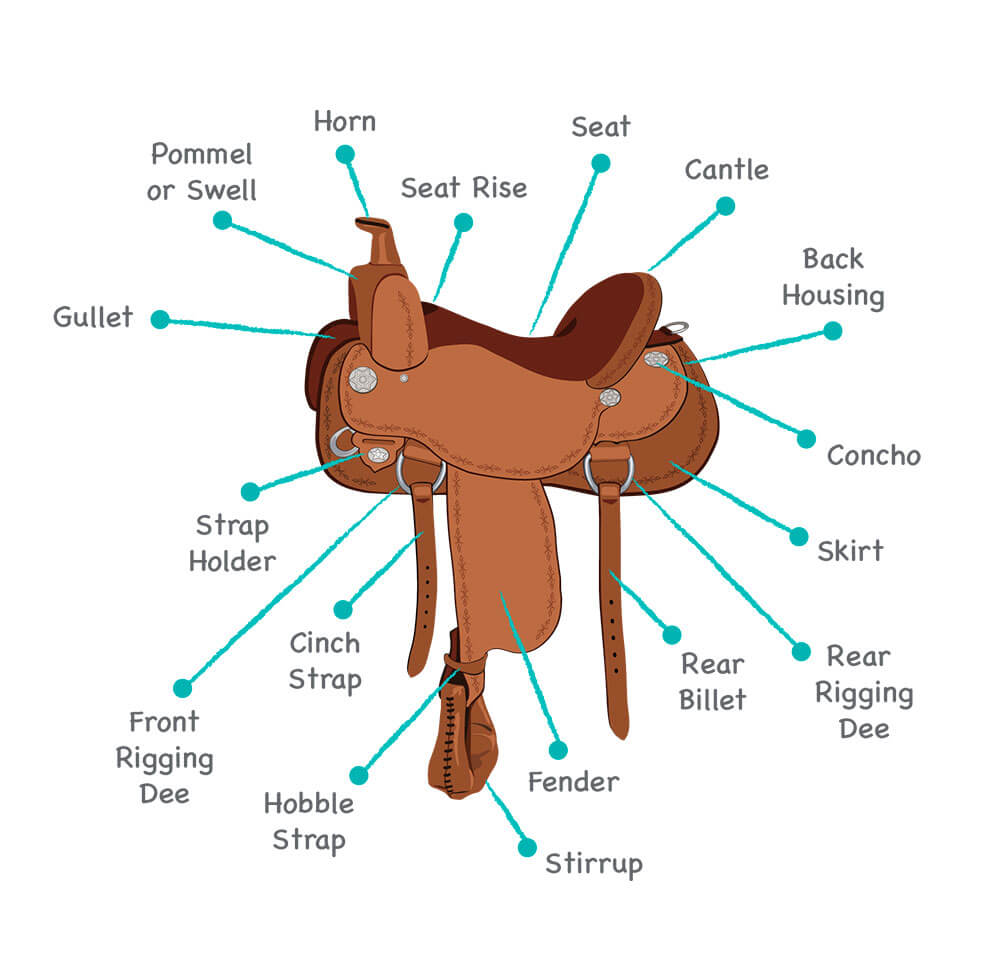
Western Saddle

The Western-style saddle is typically distinguished as a deep-seated piece of gear with a high pommel and a cantle, the fenders are large and wide. It typically comes with a horn at the front of the saddle that is originally designed to hold a rope.
In addition, such saddles are quite heavier than English saddles and could come with specific Western-style decorations.
In terms of the tree style, there are three different options:
- Semi-Quarter Horse Bars Saddle – narrow tree design for high-withered horses.
- Quarter Horse Bars Saddle – medium tree design for medium-withered horses.
- Full-Quarter Horse Bars Saddle – wide tree design for low-withered horses.
Nowadays you’re able to choose any type of saddle you like according to your needs as well as purposes. That’s why Western saddles also have different designs for a variety of horse riding activities.

Barrel Racing Saddles
Barrel racing is a competitive event that is popular in the USA, Brazil, Australia, and others. The main goal is to achieve a cloverleaf pattern around the barrel as fast as possible. The saddle for such activity is highly deep-seated to keep the rider in the saddle while the horse making sudden moves. The high horn provides a better grip for the horseman.

Pleasure Saddles
Pleasure riding (sometimes called hacking) is a non-competitive equestrian activity that is well-known all over the world. Some of the aspects could be used in showing as well, this saddle fits both of these activities. The gear is a bit lighter than other types and comes with a firm cantle. The cantle provides extra comfort and back support while riding on the trail.

Roping Saddles
Roping saddles are great for farm work as well as rodeo events like calf roping. The sturdy design enhances the balance while the rider is in the stand-up position and throws a rope. The horn is made with a sturdy material to handle the calf roped to the saddle horn. The saddle material is extremely tough to reduce the slip.

Trail Saddles
Trail riding is considered a type of pleasure riding thus the design is quite similar. They are lightweight so the horse can feel comfortable during the long ride. The deep seat features extra support for the horseman avoiding discomfort while riding on non-prepared natural hills and roads. It comes with shorter saddle skirts – a part that helps distribute the rider’s weight evenly.

English Saddle

English saddles are lighter than Western ones, typically they don’t have a horn and the seat is flatter. The saddle includes a pommel at the front and a cantle at the back of the saddle. It’s designed with a wide flap that resembles the horseman’s leg position. It also comes with a skirt that covers the iron (stirrup) bars and improves the rider’s weight balance. The three sizes are also different that fit all types of horse withers. The English style features a knee roll for better leg protection and avoiding friction.
There’s a wide range of English saddle designs according to different equestrian sports, let’s have a look at the most common types.

All-purpose saddles
All-purpose saddles obviously could stand in good stead in different horse riding activities like jumping, flatwork, hacking and others. It features a wide flat that is a bit elongated at the front that could be useful in jumping but not very often. As the seat is deep enough unlike other designs it’s great for trail riding as the rider sits straight and firm.
Close-contact saddles
If you’re fond of jumping, fox hunting or eventing, the close-contact saddle (hunt seat saddle) is a great choice. As its name already says, the saddle allows close contact between the horseman and their horse to prevent the interference with the horseman’s position. The flaps have a forward design and the length of the stirrup irons is shorter so the rider can easily stand up out of the saddle when the horse jumps over the obstacles. The seat is flatter to keep the rider in a forward position that’s why this saddle is also called a forward seat saddle.
Dressage saddles
As the rider should sit straight in the saddle when dressage, the design of the gear is deep-seated as well as the pommel and the cantle are higher. The length of the irons is quite longer than the saddles’ stirrups described previously but still not so long. The saddle flaps are also longer, near to the square shape for the longer leg position. Usually, it comes with thigh blocks to fix the posture that is more upright.

Horse Girth / Horse Cinch
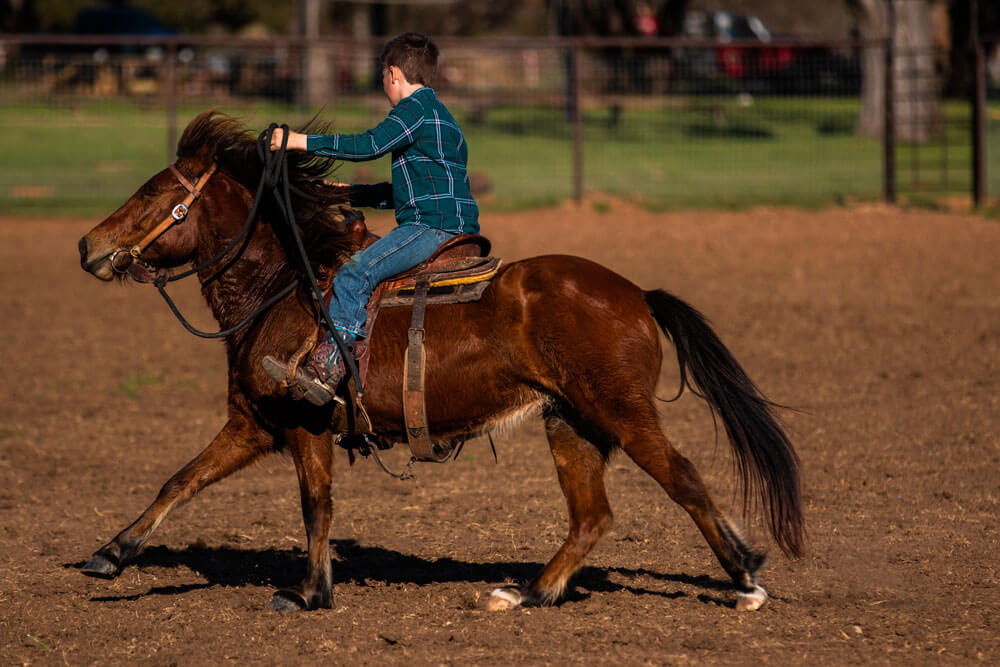
A horse girth (English) or a cinch (Western) is used to keep the horse saddle tight and avoid wobbling. It’s a wide strap that is attached to a saddle underneath the horse’s barrel. The gear is attached with the billets (girth straps) from the both sides of the horse. In Western saddles, the cinch is fastened to the saddle with a leather strap called latigo (1 strap on each side). If the cinch is set just behind the horse’s elbows that means you did it properly.
Check out our article on how to saddle a horse to get more information on tacking a horse.
Horse Saddle Pads

Saddle pads are placed between the saddle and the horse to protect both. The pad supports the rider from slipping and provides comfort for the companion to reduce rubbing his skin and hair. It also keeps the underneath of the horse saddle in better conditions so it will last longer. In addition, most of the pads on the market provide sweat-absorption features to keep the horse cool and comfy.
As there’s a big array of horse saddles, there are lots of different saddle pads too that are designed for specific equestrian sports.
- All-purpose pads. These pads have the same shape as the all-purpose or close-contact saddles and originally come in a wight color but other colors are also available. The design is about an inch thick; the pads are made with fleece or similar soft material to lower the pressure on the horse’s back.
- Dressage pads. Such pads come in a quilted square design. The fabric typically is cotton. They are not so thick padded (half an inch) but are quite wide and absorb well. The color palette is also highly versatile.
- Western Pads. The pads feature a thick design (an inch and more). They are made with a big range of materials – wool, fleece, felt and others. There are also lots of color styles, both solid colors and printed versions.
Horse Bridles

Horse bridle is an essential headgear that helps the horseman control his horse duly. There’s a huge bunch of horse bridle variations so let’s check the main parts of the horse equipment and their designs.
Basic Structure
The style of the bridle may vary in different equestrian disciplines but the structure is quite the same that consists of several parts:
- a headstall that goes over the horse’s head and holds a bit. It’s used to lead the horse.
- a bit that is placed in the horse’s mouth that helps control the horse gently. The bitless bridle design is also available where a hackamore is used instead.
- reins – long straps attached to the bit that the horseman holds in and use to communicate with his horse.
The horse bridles can also be divided into Western and English styles.
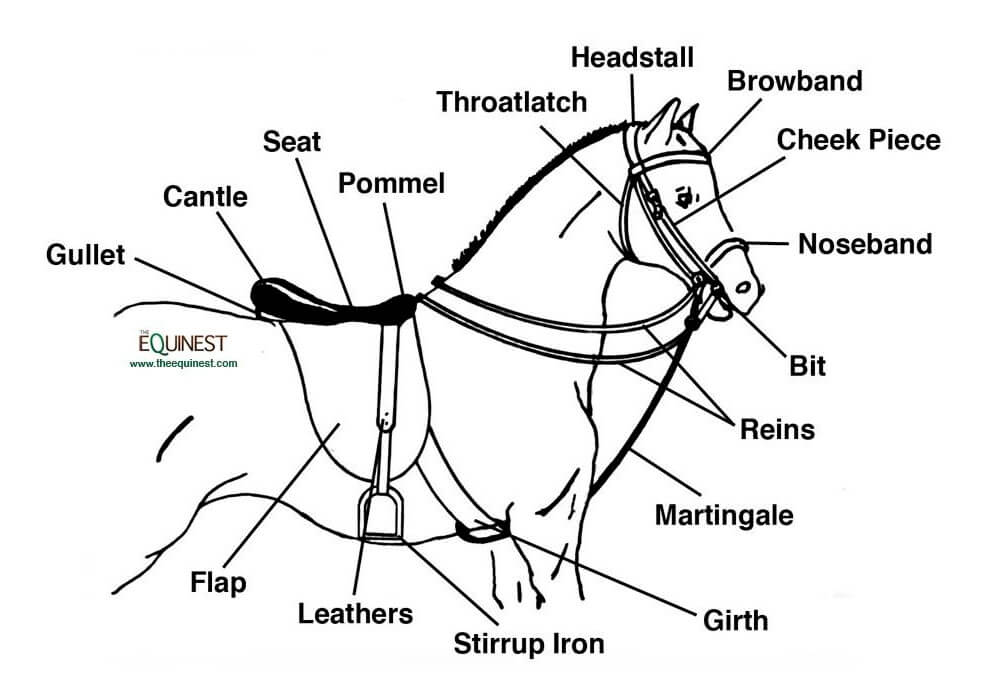
Western Bridles
Headstall designs
- Split-ear design – only one ear goes through the headstall.
- Double-ear design – each ear goes through the different straps.
- Browband design – there’s a strap that goes across the forehead that encompasses both ears.
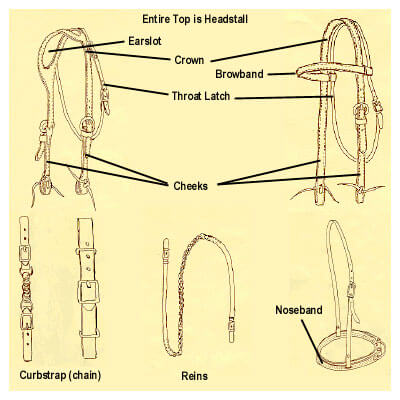
Bit designs
There are dozens of bit designs, here we mentioned just a few of them.
- Curb bit. It has a lever design that creates pressure on the horse’s mouth, chin, and poll as a part of the bridles.
- Curb bit with a roller. It comes with a roller in the middle of the bit that fosters salivation.
- Tom Thumb bit. It features shanks placed between the bit and the reins to create leverage that reduces the pressure on the companion’s tongue.
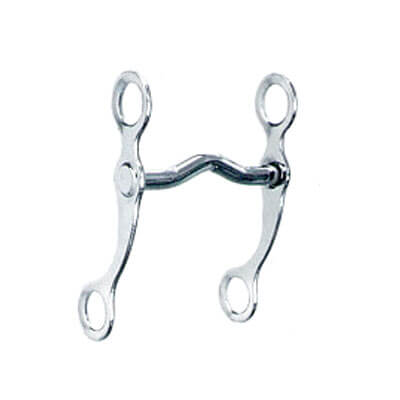
English Bridles
Headstall designs
- Dressage design – it comes with a strap across the horse’s forehead and an extra cheekpiece to hold a bit like a snaffle bit. The reins are attached from the both sides.
- Single-rein design – there’s one rein attached to one side of the bit. Commonly used by beginners.

Bit designs
- Snaffle bit. It comes with a bit mouthpiece and a ring on each side. It’s designed to create pressure with no leverage on the horse’s mouth.
- D-Ring bit. It comes with D-shaped rings that sit in the mouth well. Good choice for racehorses.
- Full-cheek bit. Big cheekpieces are designed for better comfort to be firmly placed in the mouth.
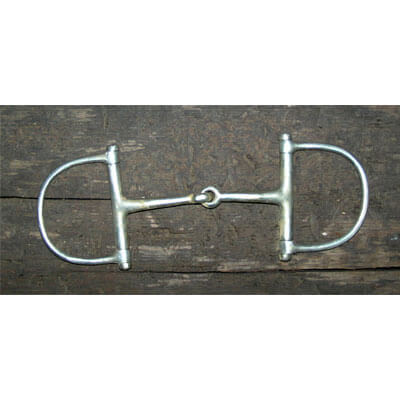
Final Thoughts
As you can see, there’s a huge variety of tacking gear available on the market. Both Western and English styles provide various designs to fit the specific rider’s purpose. The list of horse equipment could be longer but here we decided to outline the most essential gear that should be considered if you’re interested in riding a horse. After reading the article, you can choose which tacking equipment you need to plunge into horseback riding activities and stay protected and comfy. Have a safe ride!
